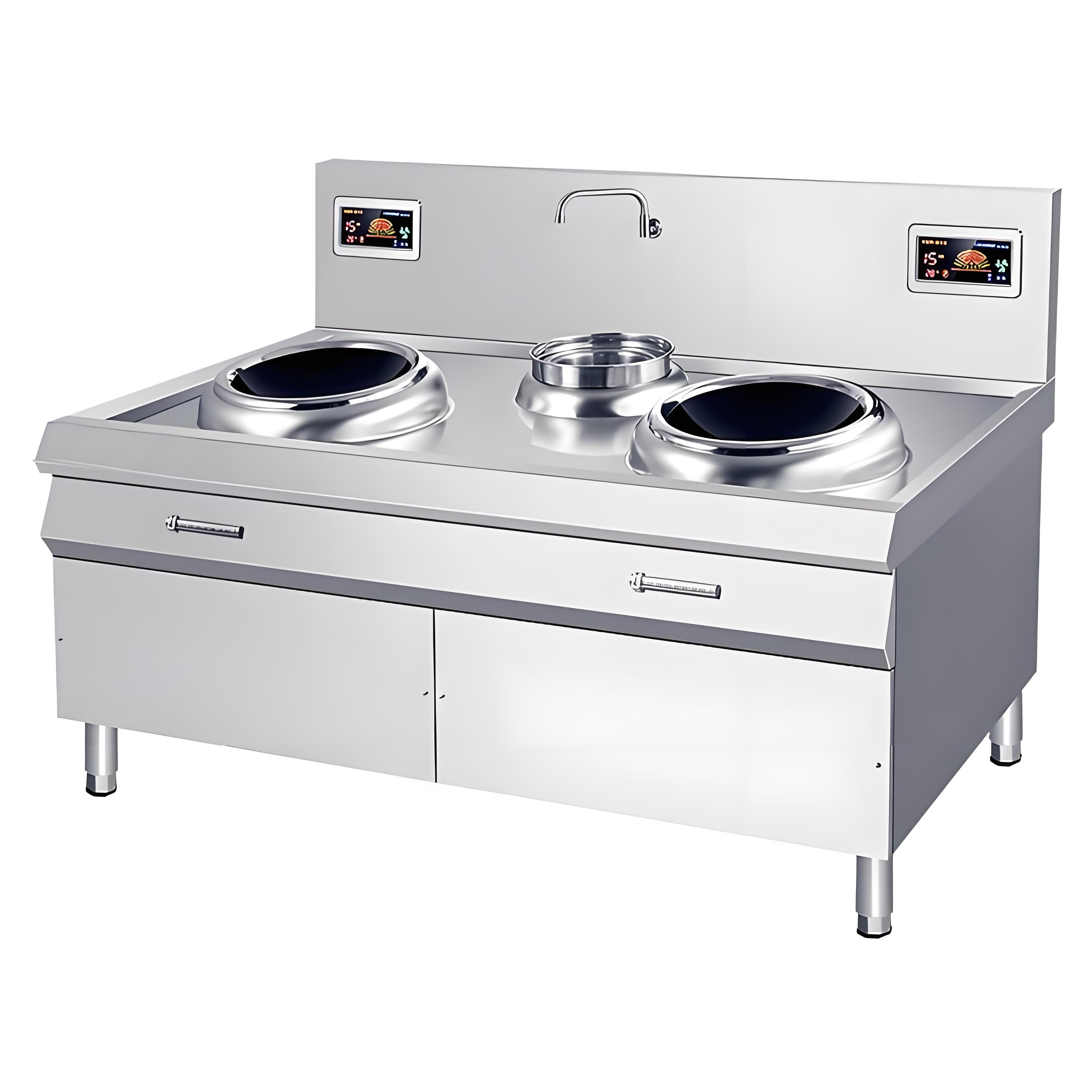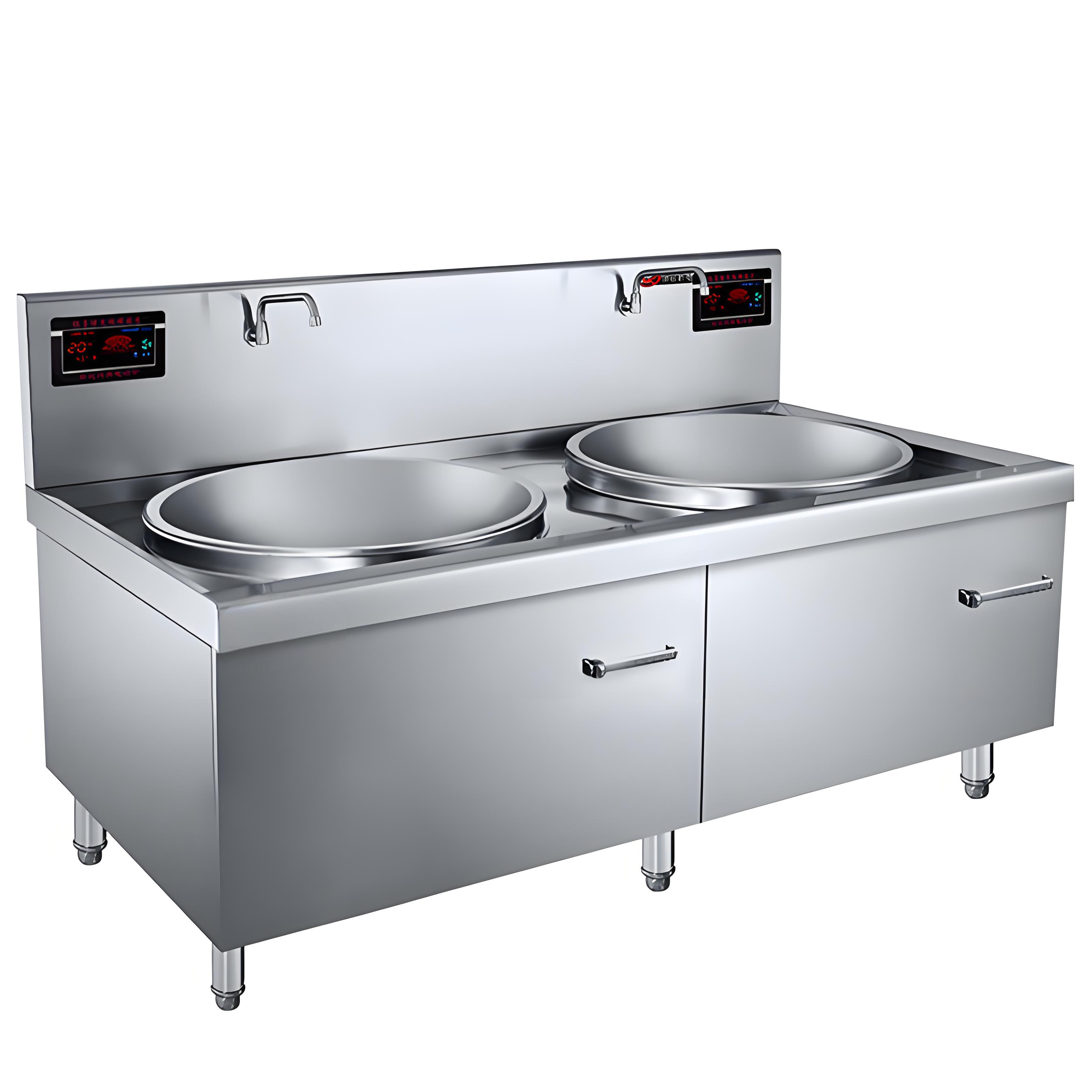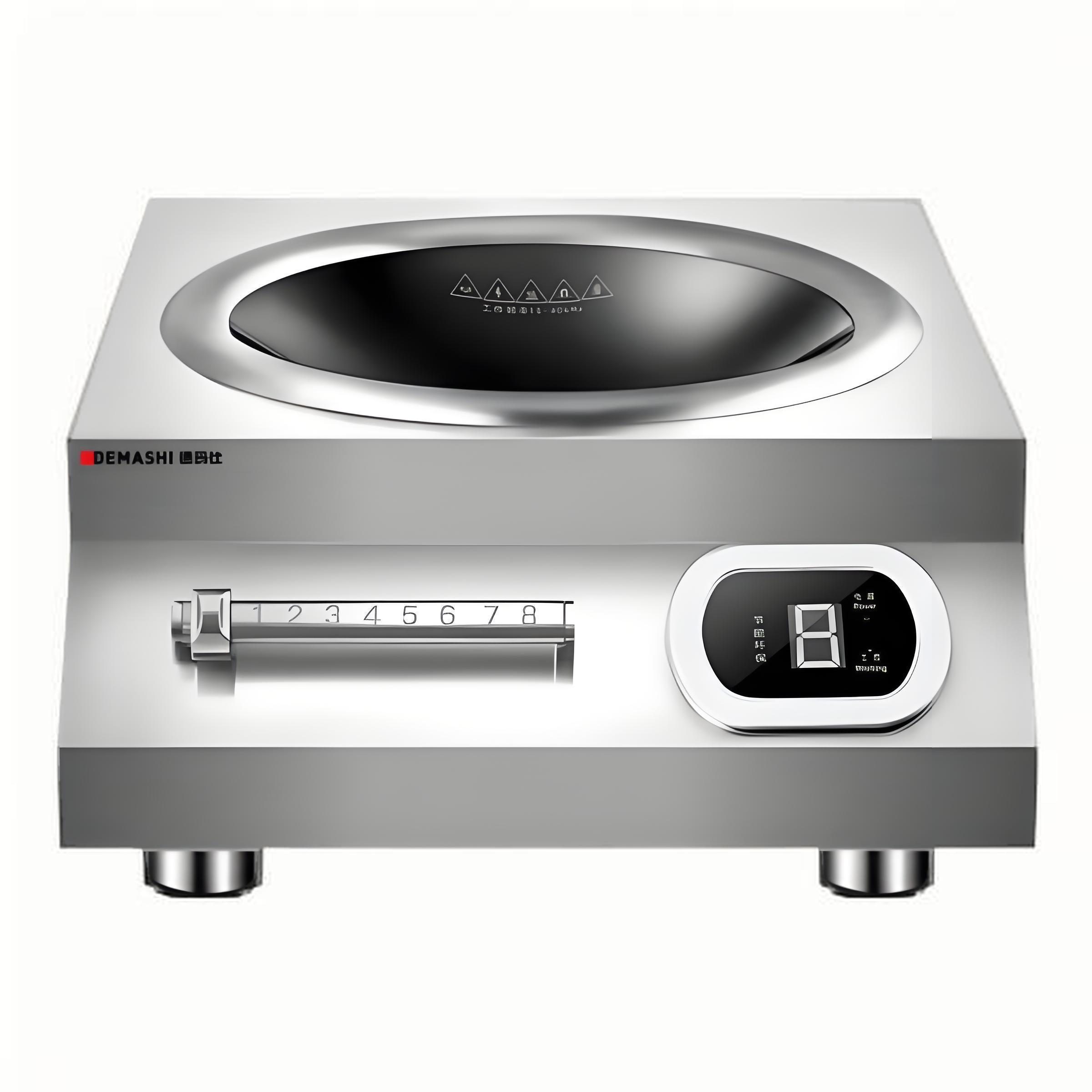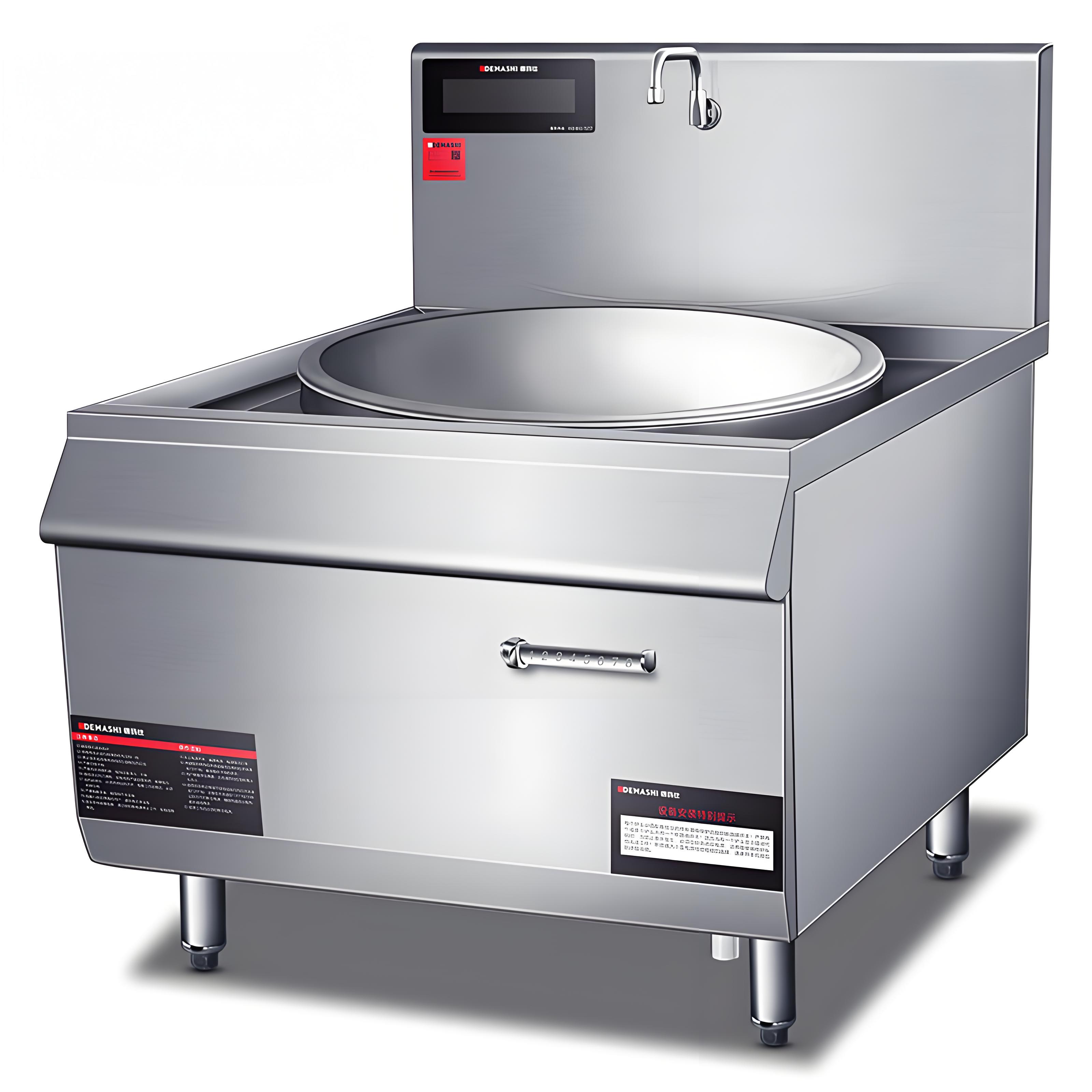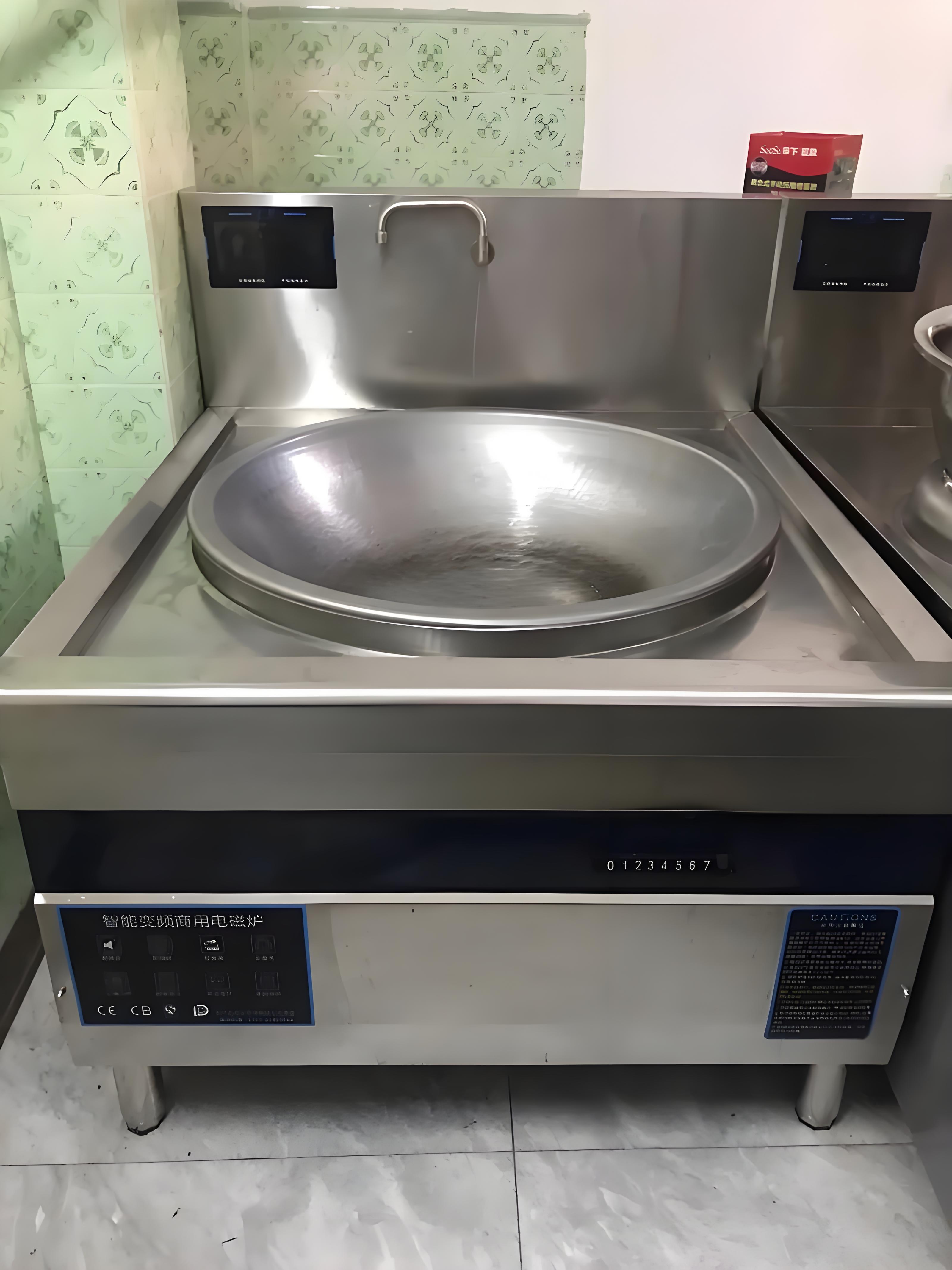In the bustling world of commercial kitchens, where efficiency, precision, and reliability are paramount, commercial induction cooktops have emerged as a game-changer. These advanced cooking appliances offer numerous advantages over traditional gas or electric stoves, such as faster heating times, better energy efficiency, and enhanced safety features. However, like any sophisticated piece of equipment, commercial induction cooktops can sometimes display error codes or warning messages that may leave kitchen staff puzzled. As someone who has been deeply involved in the commercial kitchen equipment industry for many years, I’ve encountered countless questions about how to interpret these display codes. In this article, I’ll share my expertise and provide you with a comprehensive guide to understanding the display codes on commercial induction cooktops.
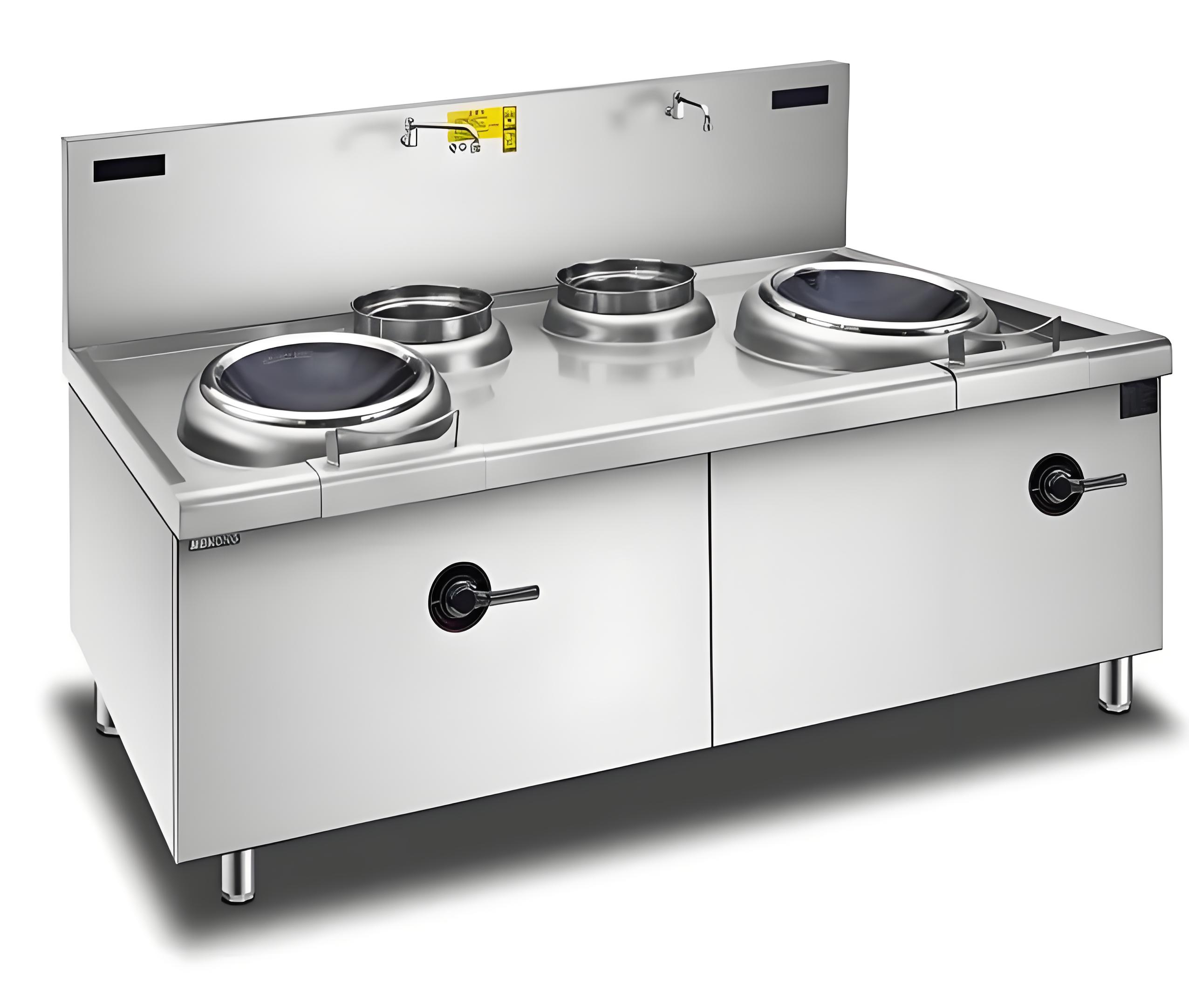
Understanding the Importance of Display Codes
Before we dive into the specifics of interpreting display codes, let’s first understand why they are important. Display codes on commercial induction cooktops serve as a communication tool between the appliance and the user. They provide valuable information about the status of the cooktop, any potential issues, and instructions for troubleshooting. By being able to interpret these codes correctly, kitchen staff can quickly identify and resolve problems, minimizing downtime and ensuring the smooth operation of the kitchen.
Common Types of Display Codes
Commercial induction cooktops can display a variety of codes, each with its own meaning. Here are some of the most common types of display codes you may encounter:
1. Error Codes
Error codes indicate that there is a problem with the cooktop that requires attention. These codes can range from minor issues, such as a loose connection, to more serious problems, such as a faulty component. When an error code is displayed, it’s important to take immediate action to prevent further damage to the cooktop and ensure the safety of the kitchen staff.
2. Warning Codes
Warning codes are similar to error codes but are usually less severe. They may indicate a potential issue that could lead to a problem if not addressed, such as overheating or low voltage. Warning codes serve as an early warning system, allowing kitchen staff to take preventive measures before a more serious issue arises.

3. Status Codes
Status codes provide information about the current state of the cooktop, such as whether it is in standby mode, heating mode, or cooling mode. These codes are useful for monitoring the operation of the cooktop and ensuring that it is functioning as expected.
4. Function Codes
Function codes are used to access and control various features and settings of the cooktop, such as power levels, timer settings, and child lock. By understanding function codes, kitchen staff can customize the operation of the cooktop to suit their specific needs.
How to Interpret Display Codes
Now that we have a better understanding of the different types of display codes, let’s explore how to interpret them. The exact meaning of a display code can vary depending on the make and model of the commercial induction cooktop. However, there are some general guidelines that can help you get started.
1. Refer to the User Manual
The first and most important step in interpreting display codes is to refer to the user manual that came with your commercial induction cooktop. The user manual will provide a detailed list of all the possible display codes, along with their meanings and instructions for troubleshooting. If you don’t have the user manual, you can usually download a copy from the manufacturer’s website.
2. Understand the Code Format
Display codes on commercial induction cooktops typically follow a specific format. They may consist of a combination of letters, numbers, or symbols. For example, a code may be displayed as “E1,” “F02,” or “H.” Understanding the code format can help you quickly identify the type of code and its general meaning.
3. Look for Patterns
Sometimes, display codes may be part of a larger pattern or sequence. For example, if you see a series of error codes that start with “E” followed by a number, it may indicate a problem with a specific component or system of the cooktop. By looking for patterns, you can narrow down the possible causes of the problem and take more targeted troubleshooting steps.
4. Consider the Context
The context in which a display code appears can also provide valuable clues about its meaning. For example, if the cooktop is displaying an error code while it is in use, it may indicate a problem with the heating element or the power supply. On the other hand, if the code appears when the cooktop is first turned on, it may indicate a problem with the initialization process. By considering the context, you can better understand the nature of the problem and take appropriate action.
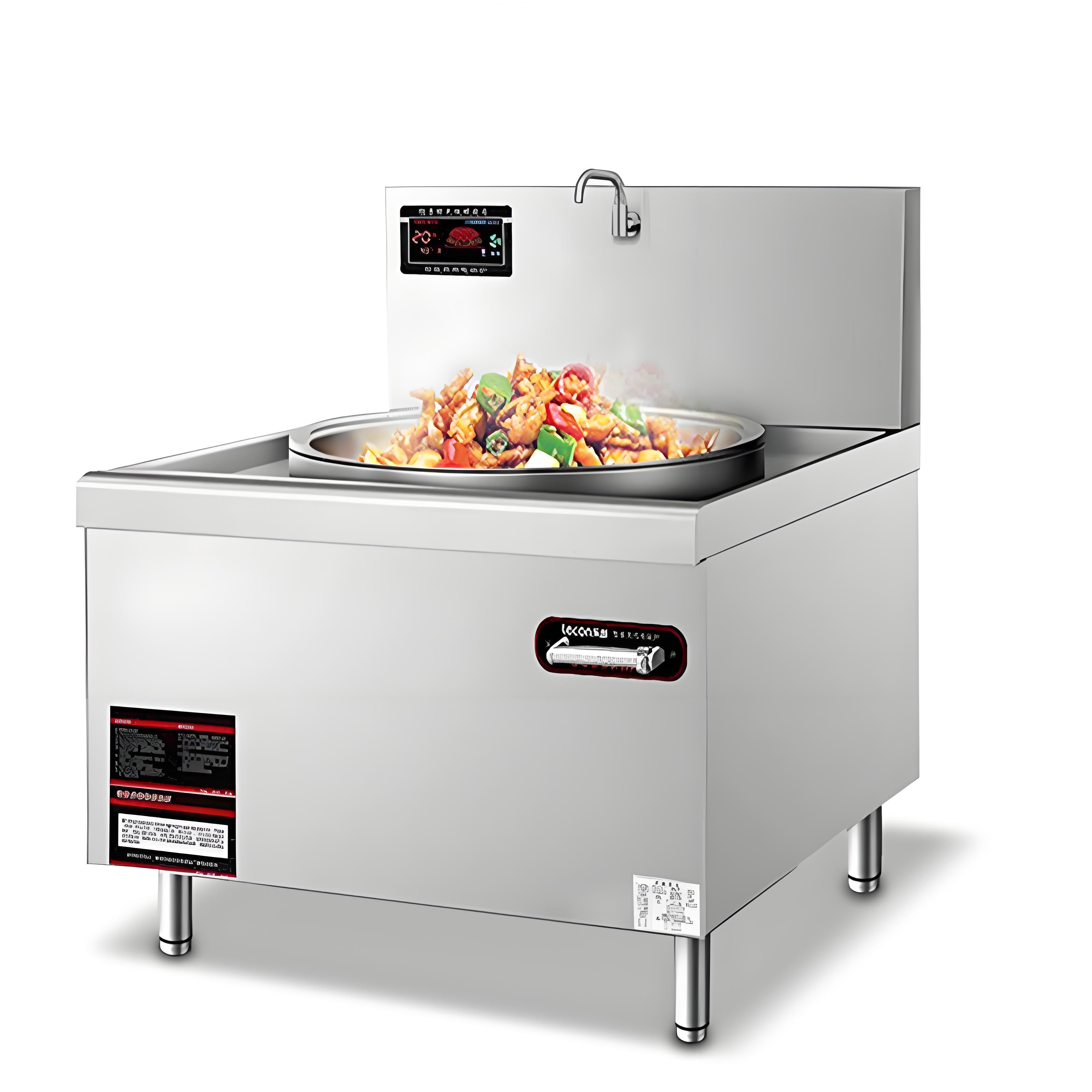
Table: Common Display Codes and Their Meanings
Here is a table of some common display codes that you may encounter on commercial induction cooktops, along with their general meanings. Please note that the exact meaning of a code may vary depending on the make and model of the cooktop, so it’s always best to refer to the user manual for specific information.
| Display Code | General Meaning | Possible Causes | Recommended Action |
|---|---|---|---|
| E1 | Temperature sensor error | Faulty temperature sensor, loose connection, or damaged wiring | Check the temperature sensor and its connections. Replace the sensor if necessary. |
| E2 | Overheating | Blocked ventilation, malfunctioning cooling fan, or excessive use | Ensure proper ventilation around the cooktop. Check the cooling fan and clean it if necessary. Reduce the power level or usage time if the cooktop is overheating. |
| E3 | Power supply issue | Low voltage, unstable power supply, or faulty power cord | Check the power supply and ensure it is stable and within the specified range. Check the power cord for damage and replace it if necessary. |
| E4 | Communication error between control board and other components | Loose connections, damaged wiring, or faulty control board | Check all connections between the control board and other components. Replace damaged wiring or the control board if necessary. |
| F01 | Faulty heating element | Short circuit, open circuit, or damaged heating element | Turn off the power to the cooktop and check the heating element for damage. Replace the heating element if necessary. |
| F02 | Faulty control board | Malfunctioning control board, software glitch, or electrical damage | Turn off the power to the cooktop and contact the manufacturer or a qualified technician for assistance. The control board may need to be replaced or reprogrammed. |
| H | Cooktop is in heating mode | Normal operation | No action required. The cooktop is functioning as expected. |
| S | Cooktop is in standby mode | Normal operation | No action required. The cooktop is ready for use but not currently heating. |
| P1 – P10 | Power level settings | Adjustable power levels for different cooking needs | Use the function codes to select the desired power level for your cooking task. |
| T | Timer function is active | Timer is set and counting down | No action required unless you want to adjust or cancel the timer. |
Troubleshooting Tips Based on Display Codes
Once you have interpreted the display code on your commercial induction cooktop, you can take appropriate troubleshooting steps to resolve the problem. Here are some general troubleshooting tips based on common display codes:
1. For Error Codes Related to Temperature Sensors (e.g., E1)
Check the Temperature Sensor: Locate the temperature sensor on the cooktop and inspect it for any signs of damage or corrosion.
Test the Sensor: Use a multimeter to test the resistance of the temperature sensor. Compare the readings with the manufacturer’s specifications to determine if the sensor is faulty.
Check Connections: Ensure that the temperature sensor is properly connected to the control board. Check for loose or damaged wires and repair or replace them as needed.
2. For Overheating Error Codes (e.g., E2)
Check Ventilation: Ensure that there is adequate ventilation around the cooktop. Remove any obstructions that may be blocking the airflow.
Clean the Cooling Fan: If the cooktop has a cooling fan, clean it regularly to prevent dust and debris from accumulating and affecting its performance.
Reduce Power Level: If the cooktop is overheating during normal use, try reducing the power level to see if that helps.
3. For Power Supply Issue Error Codes (e.g., E3)
Check the Power Outlet: Ensure that the cooktop is plugged into a stable and properly grounded power outlet.
Test the Voltage: Use a voltage tester to check the voltage at the power outlet. If the voltage is too low or unstable, contact an electrician to resolve the issue.
Check the Power Cord: Inspect the power cord for any signs of damage, such as fraying or cuts. Replace the power cord if necessary.
4. For Communication Error Codes (e.g., E4)
Check All Connections: Turn off the power to the cooktop and check all connections between the control board and other components, such as the heating elements, temperature sensors, and power supply.
Replace Damaged Wiring: If you find any damaged or loose wires, repair or replace them as needed.
Contact the Manufacturer: If the problem persists after checking all connections, contact the manufacturer or a qualified technician for further assistance. The control board may need to be replaced or reprogrammed.
5. For Faulty Heating Element Error Codes (e.g., F01)
Turn Off the Power: Before attempting any repairs, turn off the power to the cooktop to avoid the risk of electric shock.
Inspect the Heating Element: Locate the heating element and inspect it for any signs of damage, such as cracks, burns, or discoloration.
Test the Heating Element: Use a multimeter to test the continuity of the heating element. If there is no continuity, the heating element is faulty and needs to be replaced.
6. For Faulty Control Board Error Codes (e.g., F02)
Turn Off the Power: As with any electrical repairs, turn off the power to the cooktop before working on the control board.
Contact the Manufacturer: Faulty control boards are complex components that require specialized knowledge and tools to repair or replace. Contact the manufacturer or a qualified technician for assistance. They may be able to diagnose the problem and provide a solution, such as reprogramming the control board or replacing it with a new one.
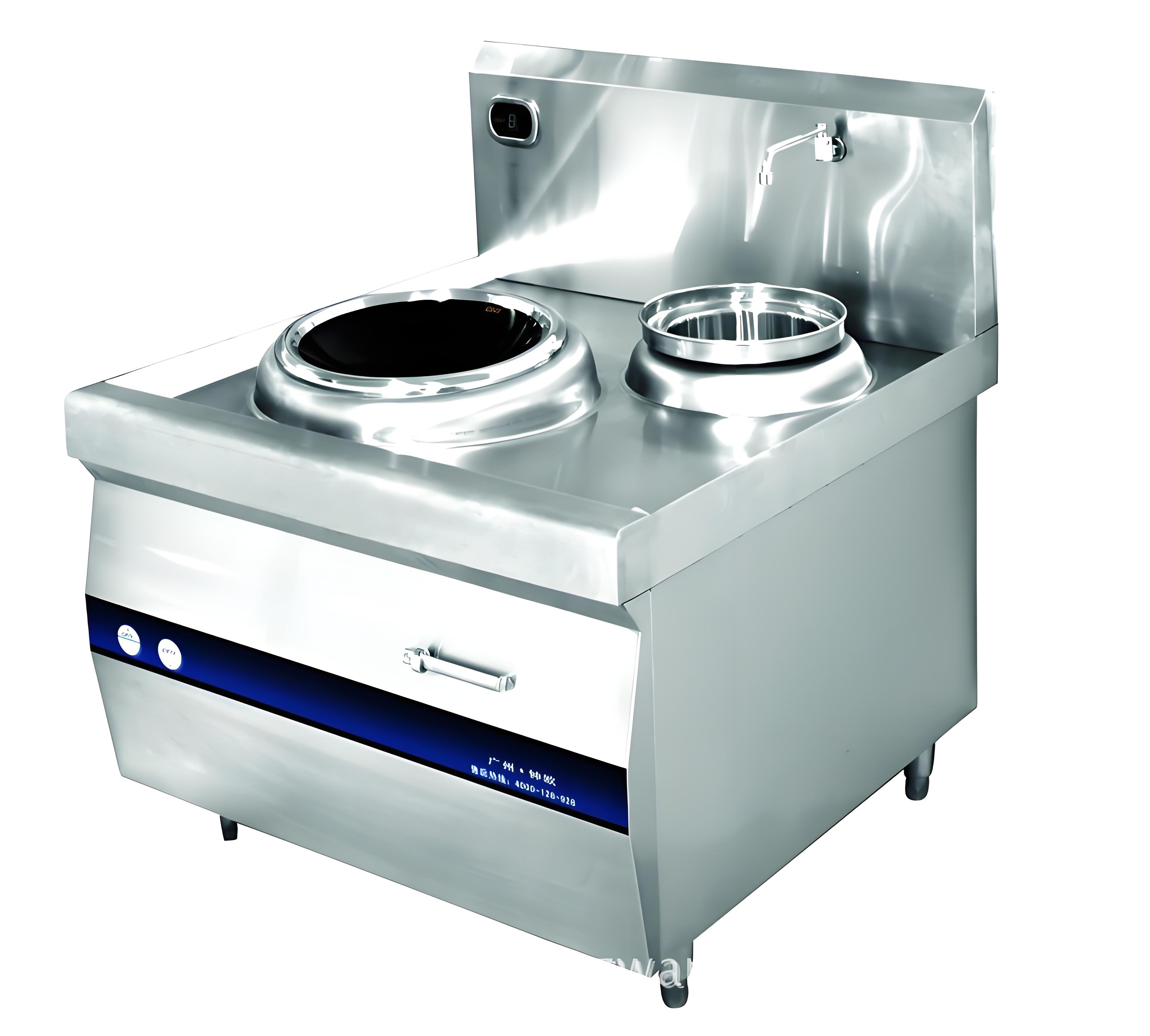
Conclusion
Interpreting display codes on commercial induction cooktops is an essential skill for anyone working in a commercial kitchen. By understanding the different types of codes, how to interpret them, and the appropriate troubleshooting steps to take, you can quickly identify and resolve problems, minimizing downtime and ensuring the smooth operation of your kitchen. Remember to always refer to the user manual for specific information about your make and model of commercial induction cooktop, and if in doubt, contact the manufacturer or a qualified technician for assistance. With the right knowledge and tools, you can keep your commercial induction cooktop running at its best and continue to serve up delicious meals to your customers.
Related Questions
1. Can I reset the display codes on my commercial induction cooktop?
In some cases, you may be able to reset the display codes on your commercial induction cooktop by turning off the power to the cooktop for a few minutes and then turning it back on. This can sometimes clear minor glitches or errors. However, if the problem persists, it’s important to address the underlying cause rather than just resetting the codes. Refer to the user manual for specific instructions on how to reset the display codes for your make and model of cooktop.
2. How often should I check the display codes on my commercial induction cooktop?
It’s a good practice to periodically check the display codes on your commercial induction cooktop, especially if you notice any unusual behavior or performance issues. Regular checks can help you identify potential problems early on and take preventive measures to avoid more serious issues down the line. Additionally, if you perform any maintenance or repairs on the cooktop, it’s a good idea to check the display codes afterward to ensure that everything is functioning properly.

3. Are display codes the same for all commercial induction cooktops?
No, display codes can vary depending on the make and model of the commercial induction cooktop. Different manufacturers may use different codes to indicate the same or similar issues. That’s why it’s important to refer to the user manual that came with your specific cooktop to understand the meaning of the display codes. The user manual will provide a detailed list of all the possible codes and their meanings for your particular model.
4. Can I repair a commercial induction cooktop with a display code issue myself?
While some minor display code issues may be relatively easy to fix, such as loose connections or damaged wiring, more complex problems, such as faulty control boards or heating elements, may require specialized knowledge and tools to repair. If you’re not experienced in working with electrical appliances, it’s best to contact the manufacturer or a qualified technician for assistance. Attempting to repair a commercial induction cooktop yourself without the proper knowledge and skills can be dangerous and may cause further damage to the appliance.
5. How can I prevent display code issues on my commercial induction cooktop?
To prevent display code issues on your commercial induction cooktop, it’s important to follow proper maintenance and usage guidelines. Here are some tips to help you keep your cooktop in good working condition:
Regular Cleaning: Clean the cooktop regularly to remove food debris, grease, and other contaminants that can affect its performance. Use a soft cloth and a mild detergent, and avoid using abrasive cleaners or scrubbers that can scratch the surface.
Proper Ventilation: Ensure that there is adequate ventilation around the cooktop to prevent overheating. Avoid blocking the air vents or placing the cooktop in a confined space.
Avoid Overloading: Don’t overload the cooktop with too many pots and pans or use cookware that is too large or too small for the heating elements. This can cause uneven heating and may trigger display code issues.
Follow the User Manual: Read and follow the user manual carefully to understand the proper operation and maintenance of your commercial induction cooktop. This will help you avoid common mistakes and ensure the longevity of the appliance.
